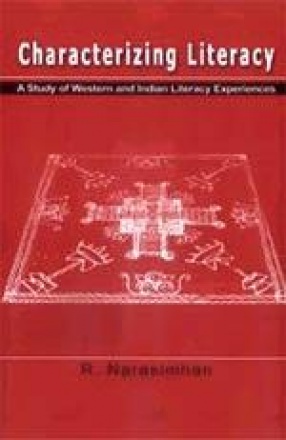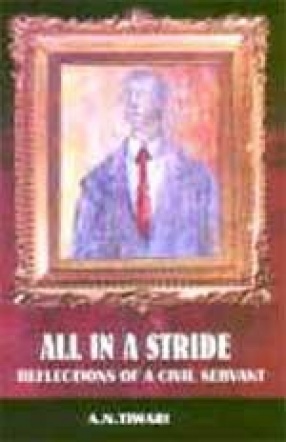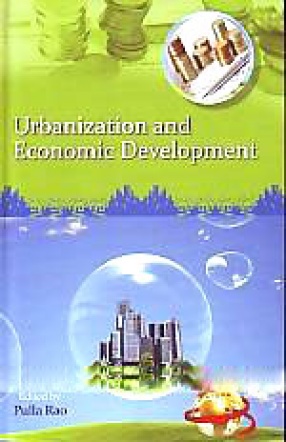Literacy is presumed to have a direct bearing on the modernization of a traditional society. The proponents of the ‘literacy hypothesis’ in fact argue that the invention of written scripts was the direct cause of the modernization of Western societies. Departing significantly from this widely held approach, Dr Narasimhan contends that it is important to understand literacy from a broader perspective by taking account of the ‘literacy’ practices that various traditional social groups and even individuals engage in. Citing numerous telling examples, primarily from India, Dr Narasimhan shows how these experiences demonstrate a new relationship between orality and literacy. They show that forms of articulation that have been considered to be available only in the written literacy tradition have actually been developed and practised using purely oral methods. These practices support the preservation and transmission of structurally complex performing arts and other important cultural practices. The author introduces a revised characterization of literacy defining it as the capacity for reflective thinking, supported by technology. Since this approach impacts on education, the author also assesses methods and practices on schooling and of teaching literacy.
Characterizing Literacy: A Study of Western and Indian Literacy Experiences
$14.40
$16.00
In stock
Free & Quick Delivery Worldwide
All orders amounting to US$ 50 or more qualify for Free Delivery Worldwide. For orders less than US$ 50, we offer Standard Delivery at $14 per book.
ABOUT THE AUTHOR R. Narasimhan
Mr. R. Narasimhan was born on 24th March 1935. Had his early school and College education at Chennai and after completing his M.A. (Economics) from Maharaja’s College, Kerala University, was recruited as Probationary officer in State Bank of India in 1958. Completing his usual training and early Branch assignments, worked his way up the ladder in acquiring the requisite job knowledge and managerial skills at the Controlling Offices and occupied the exalted positions of Chief General Manager, Patna Local Head Office, Managing Director, SBI Factor & Commercial Services Pvt. Ltd, Dy. Managing Director, Corporate Operations and subsequently as Dy. Managing Director (Systems & Technology) for a period of 2 years between 1993/95, when he retired from service on 31st March 1995 on reaching the age of superannuation. Mr. Narasimhan was deputed to various training Institutions within India and abroad. He had travelled extensively in the Far East, Africa, Western Europe, United Kingdom, Ireland and USA, attending numerous seminars, high profile conferences and visits to Correspondent Banks and Institutions, pursuing his technological interests and studying matters of interest in modernizing banking.. He had developed deep incisive knowledge in banking operations. He was a Fellow of Indian Institute of Bankers. He had an eye for detail and could easily spot the uncommon and unusual, odd transaction which excited him to pursue matters to the logical end. His uncanny ability, coupled with perseverance and patience to put in strenuous hard work, made him take up many challenges in Banking Operations and introduction of Technology in SBI, in early 1990, far ahead of competition. His seminal contribution was conceiving an exclusive training institution called State Bank Institute of Information and Communication Management (SBIICM) for imparting education in Technology to Bank Officials to provide the cutting edge knowledge. He became the Founder Director of SBIICM and was associated with the purchase of a modern 10-storied building in Banjara Hills, Hyderabad for the said purpose. The design of the building in collaboration with National Institute of Design (NID), Ahmedabad, its internal and external lay out soon became unique in character and was a showpiece amongst the training institutions in the country. He also collaborated with Indian Institute of Management (IIM), Ahmedabad in converting Banking Trainees into IT Trainees. He was associated with the introduction of Bankmaster software across several SBI Branches, which stood the ground for more than a decade, before yielding place to Core Banking Solution in the recent times. His passion for Banking Operations and technology upgradation in banking operations gave him ample opportunities to optimize and fine-tune efficient Cash Management, Treasury Investments relating to CRR/SLR, branch computerization and networking, which enabled him to work on committees constituted by RBI, Government of India and Indian Banks’ Association. He rationalized the Balance Sheet consolidation exercise. He was ahead of his times in laying the framework for Asset/Liability Management, which is emphasized significantly nowadays and monitored at the Board level of Banks. While in Banking Operations Department, he developed an interest in the frauds which were reported to the Board which kindled his interest in documenting thoughts on this subject, post retirement, in writing this Book with wide references to current literature on this subject in USA/UK. He was invited to deliver lectures in several forums, academic institutions, Government, RBI etc where his comments and ideas were deeply reflected upon. Mr. Narasimhan’s untimely death on 24th June 2002 following a heart attack at Patna airport removed him from our midst. This book is released posthumously, thanks to enthusiasm of some of his colleagues who were instrumental in bringing out the same, which is being published and released by ICFAI publishers and at the beckoning of his wife Mrs. Shanta Narasimhan, who was anxious to see the release of his unfinished work on which he spent about 2 years. Mr. Narasimhan was a semi professional photographer and won international awards. Genial by temperament and warm hearted had a wide circle of friends both inside and outside SBI. He leaves behind his wife Mrs. Shanta Narasimhan a Doctor and 2 daughters who are well settled and a large circle of relatives. This book will kindle the interests of Bankers and others in the world of finance and students in academia, specializing in finance and preventive control systems in Banks.
reviews
0 in total
Review by Anonymous
Be the first to review “Characterizing Literacy: A Study of Western and Indian Literacy Experiences” Cancel reply
You must be logged in to post a review.
Bibliographic information
Title
Characterizing Literacy: A Study of Western and Indian Literacy Experiences
Author
Edition
1st ed.
Publisher
ISBN
0761998292
Length
202p., Figures; References; Index; 23cm.
Subjects
more by R. Narasimhan see more
similar bookssee more
Urbanization and Economic Development
$64.80
$72.00
Financial Terms Simplified
$19.80
$22.00






There are no reviews yet.